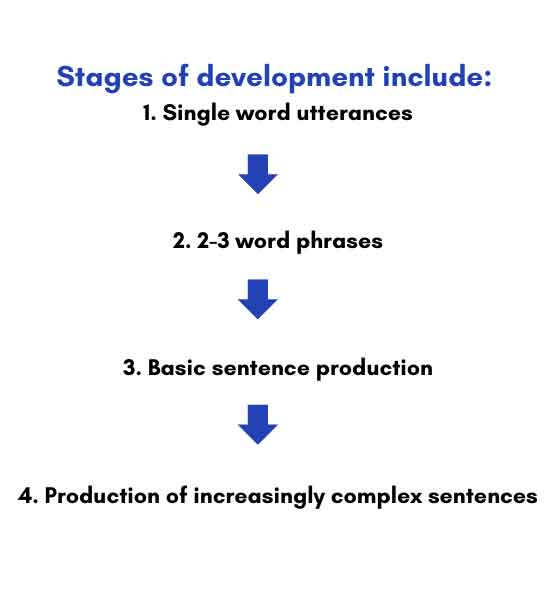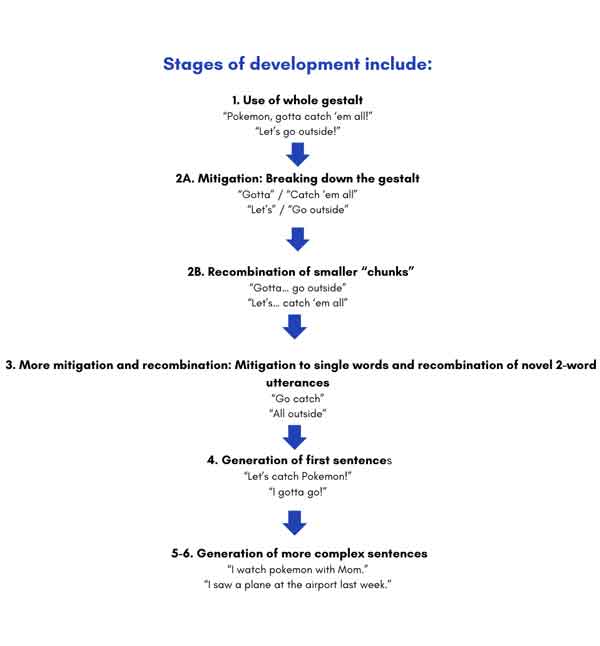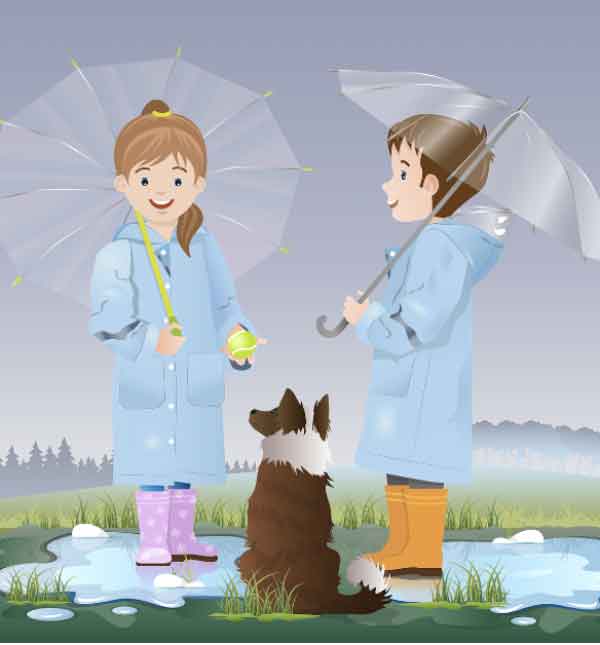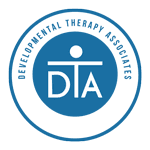
Analytic Language Processing:
Analytic language processing is what is typically evaluated when assessing a child’s language acquisition. It begins with the expression of sounds and syllables, expanding to single words, then 2-3 word phrases, and then sentences of increasing complexity. Example: “Dog!” ➡️ “Mommy! dog!” → “Look, Mommy! Dog!” → “Look, Mommy! I see a dog!”
Stages of development include:

Natural Language Acquisition (NLA)/Gestalt Language Processing (GLP):
Natural language acquisition is also a hierarchical development of language that can be anticipated based on previous and current stages. Many children diagnosed with autism are gestalt language processors, but natural language acquisition is not exclusive to autism. Where Analytic Processing follows a progression that continually expands utterances, NLA begins with large “chunks” of meaningful speech that become progressively shorter and recombined to create new sentences. These “chunks” are called Gestalts. Example: “Old McDonald had a farm E-I-E-I-O, and on that farm he had a dog, E-I-E-I-O” → “And on that farm he had a dog, E-I-E-I-O” → “Had a dog” → “I see… a dog” → “Look, Mommy I see a dog!”

Making Meaningful Connections:

Oftentimes it is difficult to immediately understand the meaning behind some of these gestalts. When a child uses a gestalt that is seemingly irrelevant, try considering the following:
- What is the current context? How is the child feeling? What are they doing? Where are they? Is this context similar to other contexts that the child has experienced?
- What is the past context? Has the child been in this place before? Are there similar routines that the child may connect with? Are there familiar people or toys present?
- Media: Think about the child’s favorite TV shows, YouTube videos, movies, and songs. Are there episodes that include similar emotions or circumstances? When does your child watch or listen to these? Do they listen to music to relax? Are they excited when SpongeBob comes on?
If you can find a connection, the child may very well be communicating a similar message. In this case, as well as when the intent is somewhat unclear, modeling an appropriate reaction is a great way to teach mitigation and recombination utilizing contextually appropriate vocabulary!

Example #1: A child is swinging and smiling and begins to sing “Happy Birthday”. The child is likely expressing that they’re happy and having fun on the swing! An adult could easily model “I’m happy!” or “Swinging makes me happy!” to improve script relevance.
Example #2: A child says “I’m thirsty.” when perceiving demands, but does not drink the water when it’s brought to them. Contextually, the child likely knows that asking for water pauses the difficult task they are working on. Offering the choice “Are you thirsty, or do you want a break?” could be a good way to assess the true meaning of the spoken gestalt. This is a chance to model “I need a break”, as well.
GLP and AAC:
If the GLP child uses an AAC/SG (Speech Generating) device, it is important to program functional gestalts into their device! This allows the child to learn and develop language naturally as they would with verbal output. Sound recordings can be made of preferred TV shows and movies, to be modeled and utilized in appropriate situations. Additionally, functional phrases like “I want…”, “no thanks”, “My name is _____”, “I’m feeling…”, etc. can be used to improve overall understanding of phrase/sentence formation.
Resources:
- https://www.meaningfulspeech.com/blog/Free-resources-GLP
- https://communicationdevelopmentcenter.com/the-natural-language-acquisition-guide-echolalia-is-all-about-gestalt-language-development/
- https://www.asha.org/practice-portal/clinical-topics/autism/echolalia-and-its-role-in-gestalt-language-acquisition/
